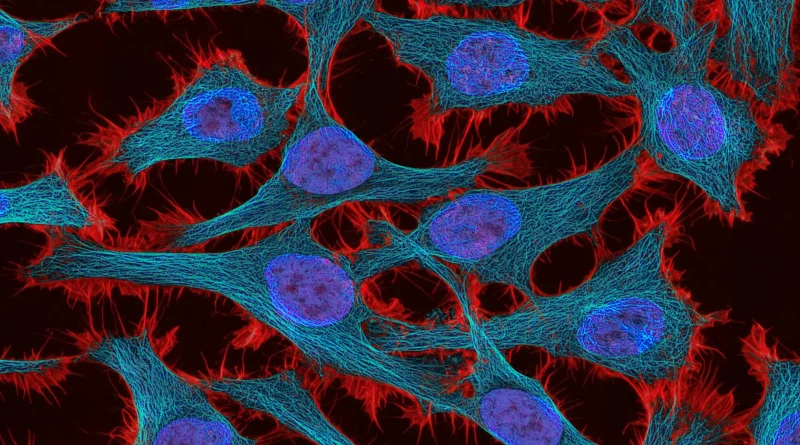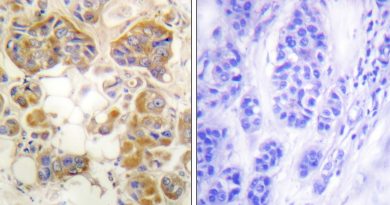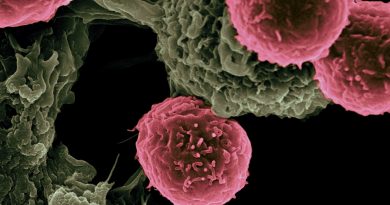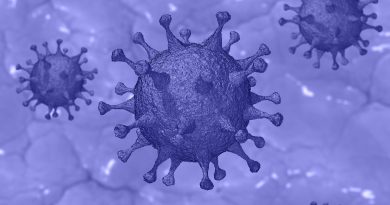Breakthroughs in Cervical Cancer Research Using Cellendes’ Advanced 3-D Life Hydrogel Products
A research study has showcased the use of Cellendes’ advanced 3-D Life Hydrogel products in developing an immunocompetent, PDMS-free organ-on-chip model of cervical cancer.
Cellendes is excited to share the groundbreaking application of its innovative 3-D Life Hydrogel in a cutting-edge microfluidic platform, as detailed in the recent publication, “Immunocompetent PDMS-Free Organ-on-Chip Model of Cervical Cancer Integrating Patient-Specific Cervical Fibroblasts and Neutrophils” by Elena Kromidas and colleagues (2023) in the Advanced Healthcare Materials journal.
A Novel Polydimethylsiloxane-free Cervical Cancer-On-Chip Model
This pivotal study, spearheaded by Elena Kromidas alongside a dedicated team of scientists and researchers from Eberhard Karls University Tübingen and the NMI Natural and Medical Sciences Institute at the University of Tübingen, introduces a novel polydimethylsiloxane-free cervical cancer-on-chip model. The research stands out in the realm of oncology for its unique approach to replicating the 3D tissue architecture of human cervical cancer. By integrating cervical tumour-like clusters with human donor-derived fibroblasts in a hydrogel, the team has emphasised the critical role of complex co-culture models in cancer research. The platform’s design allows for the administration of chemotherapeutic agents like cisplatin, demonstrating its potential for personalised drug testing and the integration of immune cells such as neutrophils into the cancerous tissue.
The study utilised Cellendes’ 3-D Life RGD Peptide (P10-3), 3-D Life SG Dextran (M91-3), and the soon-to-be-released 3-D Life CD-HyLink, which is currently available for beta-testing, showcasing the utility of this range of products for creating complex, realistic tissue models for drug testing and therapeutic development. These products were integrated into a microfluidic platform specifically designed for the 3-D co-cultivation of human cervical cancerous tissue (spheroids) with donor-derived cervical fibroblasts. The inclusion of donor-derived neutrophils into the system enabled the formation of an immunocompetent model, closely mimicking the natural tumour microenvironment.



On-Chip Generation of a Human 3D Cervical Cancer Tissue
The study focused on replicating the intricate architecture of cervical cancer tissues within a microfluidic platform. Cervical cancer is characterised by the invasion of epithelial cells across the basal lamina, forming cancerous nests in the stroma, which features fibroblasts as the predominant cell type. On-chip, cancer cell aggregates were integrated into a 3D stromal tissue, emulating these cancerous nests.
The chemically defined dextran hydrogel used in this study contains covalently attached RGD peptides to promote cell adhesion and a cell-degradable peptide within the hyaluronic acid-based crosslinker. This unique composition allows the hydrogel to be targeted by human cervical fibroblasts expressing matrix metalloproteinases (MMP1 and MMP3), facilitating the creation of a realistic and dynamic tumour environment.
Hydrogel Stability and 3D Matrix Formation
SiHa cancer cell aggregates, derived from a squamous carcinoma grade II cell line, were generated in agarose µ-wells and subsequently embedded with cervical fibroblasts in the dextran hydrogel. This configuration mimicked the multicellular cancerous nests found in vivo. The 3-D Life Hydrogel system demonstrated excellent stability without shrinkage, providing a robust 3D matrix that supported cell viability and functionality. This stable environment is crucial to allow for accurate testing of therapeutic interventions.
Dynamic Cellular Interactions
The study showed that neutrophils could be effectively recruited into the hydrogel-based co-culture, mirroring the immune response within the tumour microenvironment. This dynamic interaction between the cancer cells, fibroblasts, and immune cells provides a more comprehensive understanding of tumour biology and the immune response to cancer.
Drug Testing and Therapeutic Development
Treatment of the co-culture with cisplatin demonstrated the platform’s applicability for drug testing. Various assays, including Life/Dead staining (Calcein AM/PI), immunofluorescent staining, LDH assay (cytotoxicity), TUNEL assay, and live cell tracking, were employed to evaluate cell viability, apoptosis, and cytotoxicity. These methods confirmed the hydrogel’s suitability for supporting complex cellular structures and monitoring treatment effects.
Cells and Methods Used
The study incorporated the SiHa human squamous cervical cancer cell line, primary fibroblasts from the human cervix uteri, and human polymorphonuclear leukocytes (PMNs) from whole blood. Advanced techniques such as Life/Dead staining, immunofluorescent staining, LDH assay, TUNEL assay, and live cell tracking were employed to comprehensively analyse cell behaviour and treatment responses within the hydrogel matrix.
After 14 days of on-chip culture, the formation of 3D tissue mimicking the physiological architecture of cervical tumours was evaluated using immunofluorescence staining with cytokeratin and vimentin markers. The dextran hydrogel supported the formation of well-defined SiHa spheroids distributed as cancerous nests, with a more compact appearance after three days of cultivation.
Application and Future Prospects
The application of Cellendes’ 3-D Life Hydrogels in this study underscores their potential in drug discovery and the development of new (immuno)therapeutic options. By providing a realistic and immunocompetent model, these hydrogels enable researchers to conduct more accurate and relevant preclinical testing. The upcoming release of 3-D Life CD-HyLink, available for beta-testing, promises to further enhance the capabilities of 3-D Life Hydrogel systems in biomedical research.
About Cellendes GmbH
Cellendes GmbH is a leading biotechnology company specialising in the development and production of high-quality hydrogels for three-dimensional cell culture. The company’s 3-D Life Hydrogel products are designed to provide researchers with versatile and reliable tools for a wide range of cell biology applications, including cancer research, tissue engineering, drug discovery and regenerative medicine.
For more information on 3-D Life Hydrogel products in creating advanced models for cancer research, please contact Cellendes via the Quick Contact Form or email: info@cellendes.com
References
Kromidas, E., Geier, A., Weghofer, A., Liu, H.-Y., Weiss, M., & Loskill, P. (2023). “Immunocompetent PDMS-Free Organ-on-Chip Model of Cervical Cancer Integrating Patient-Specific Cervical Fibroblasts and Neutrophils.” Advanced Healthcare Materials. https://doi.org/10.1002/adhm.202302714
Related Products




